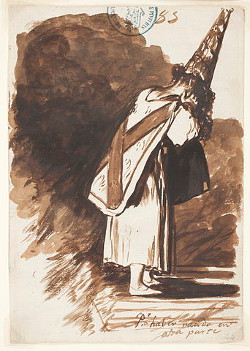
If you had to judge by bodily sensations alone, could you distinguish shame from embarrassment? Philosopher William Alston suggests that we need to consult our beliefs in order to do this. “Even if there are in fact subtle differences in the patterns of bodily sensation associated with the two, it seems that what in fact forms the basis of the distinction is that it is necessary for shame but not for embarrassment that the subject take the object to be something which is his fault.”
Similarly, Jerome Shaffer proposes that beliefs are necessary to distinguish admiration from envy. Both involve “the belief that the person who is the object of the emotion has some good, but admiration will involve the belief that the person is worthy of it whereas envy will involve the belief that I am worthy of it instead (or, at least, also).”
Robert Yanal suggests that we might even need to check our beliefs in order to distinguish extreme happiness from extreme sadness. “Since both involve a nearly overwhelming rush of sensation, we might know that we are very happy only when we check our belief that our beloved’s life has been spared, not forfeited.” Sensations themselves are not enough to identify the emotion. “Typically, belief or a belief surrogate is brought in to draw the distinctions that we think must be drawn.”
Alston adds that “the presence of such evaluations seems to be what makes bodily states and sensations emotional” in the first place. “Some sinkings in the stomach are emotional, because they stem from an evaluation of something as dangerous; other sinkings are not emotional because they stem from indigestion.”
[William Alston, “Emotion and Feeling,” The Encyclopedia of Philosophy, 1967; Jerome A. Shaffer, “An Assessment of Emotion,” American Philosophical Quarterly, April 1983; Robert Yanal, Paradoxes of Emotion and Fiction, 1999.]
